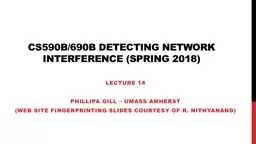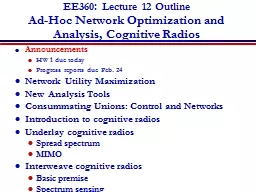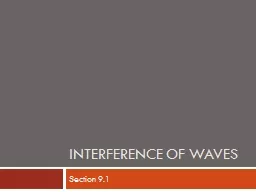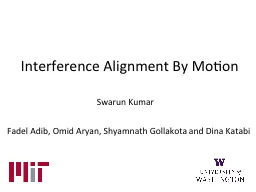PPT-CS590B/690B Detecting Network Interference (Spring 2018) Lecture 14
Author : min-jolicoeur | Published Date : 2019-10-31
CS590B690B Detecting Network Interference Spring 2018 Lecture 14 Phillipa Gill Umass Amherst Web site fingerprinting Slides courtesy of R Nithyanand Anonymity
Presentation Embed Code
Download Presentation
Download Presentation The PPT/PDF document "CS590B/690B Detecting Network Interferen..." is the property of its rightful owner. Permission is granted to download and print the materials on this website for personal, non-commercial use only, and to display it on your personal computer provided you do not modify the materials and that you retain all copyright notices contained in the materials. By downloading content from our website, you accept the terms of this agreement.
CS590B/690B Detecting Network Interference (Spring 2018) Lecture 14: Transcript
Download Rules Of Document
"CS590B/690B Detecting Network Interference (Spring 2018) Lecture 14"The content belongs to its owner. You may download and print it for personal use, without modification, and keep all copyright notices. By downloading, you agree to these terms.
Related Documents














